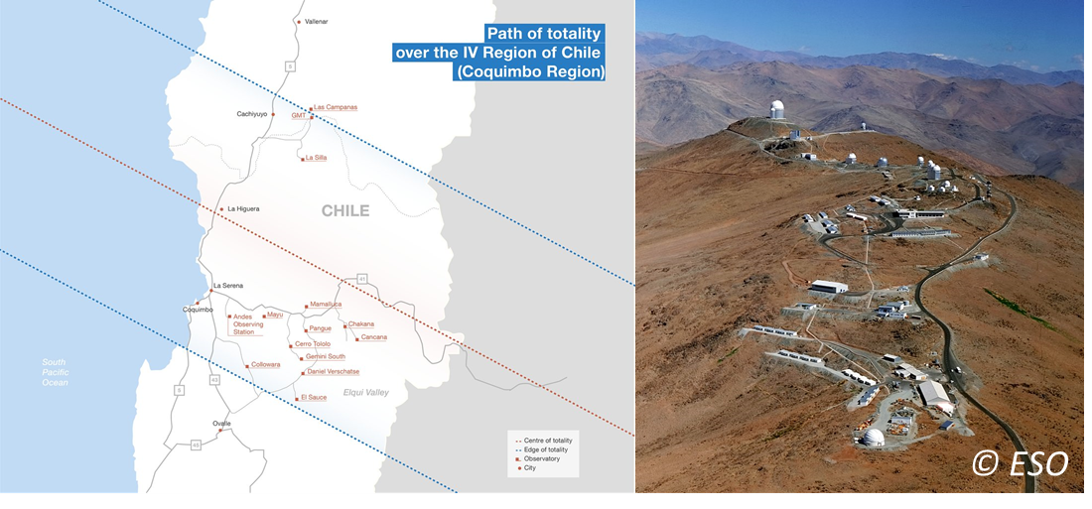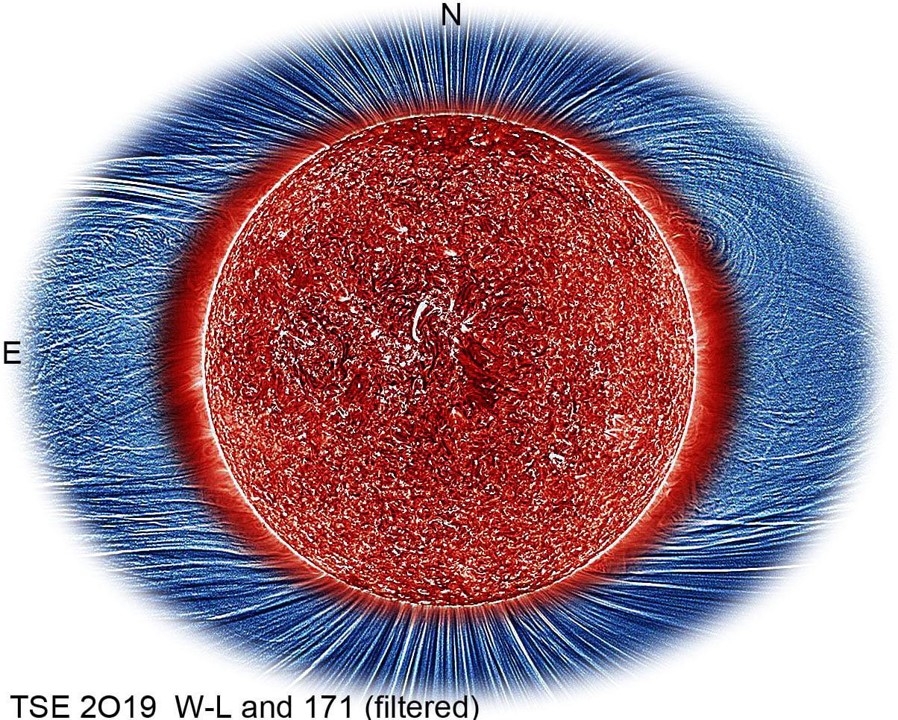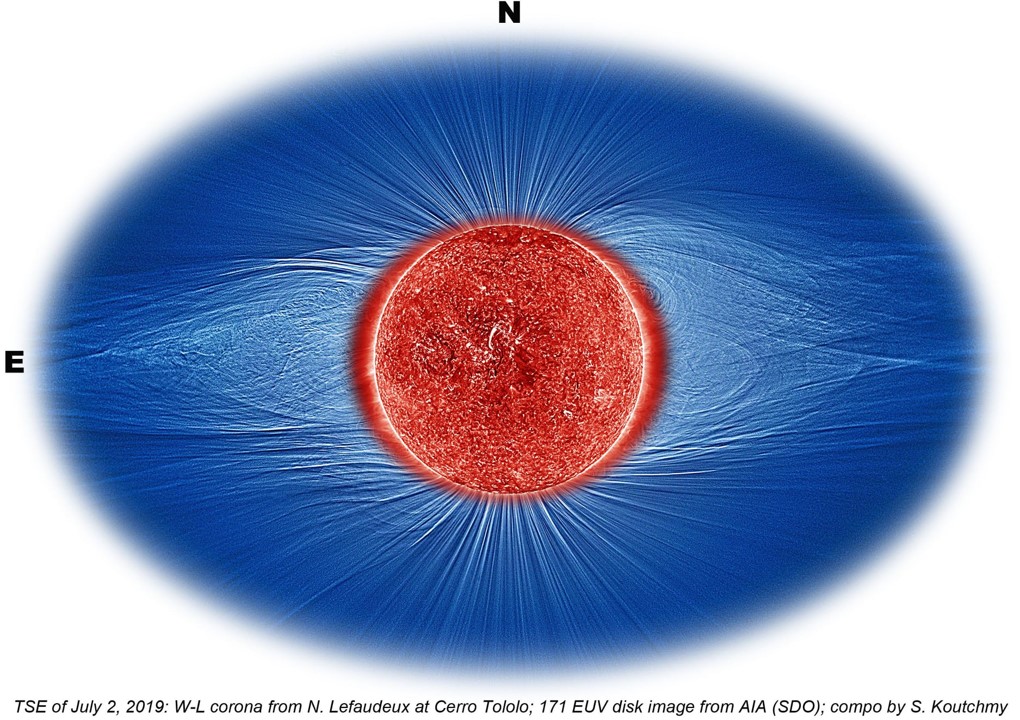A solar eclipse occurs when the Moon passes exactly between the Sun and the Earth. The Moon then casts a shadow on the Earth's surface, fully or partially blocking the sunlight. As the Moon is about 400 times smaller than the Sun, but also about 400 times closer to the Earth than the Sun, the two have about the same apparent size and the Moon can occasionally obscure the entire Sun. This is called a total solar eclipse. When the Moon is a bit further from the Earth, it appears smaller than the Sun and a solar ring becomes visible around the Moon (an annular eclipse). When the alignment is not perfect, the Moon can only block a part of the Sun (a partial eclipse). During a total eclipse, the eclipse path can be several 1000 km long, but its width is on the average only about 150 km, very narrow indeed.
Hence, with only 2 to 5 solar eclipses (all types included) every year, these are very rare events. Moreover, as 70% of the Earth's surface consists of oceans, and taking into account that a large portion of the landmass consists of sparsely populated or uninhabitated regions (poles, deserts,...), it's quite unusual when a total eclipse passes over big cities. This does happen from time to time, such as on 11 August 1999 (Europe) or on 21 August 2017 (the "Great American Eclipse" over the entire contiguous United States). The odds that the path of totality passes right over a number of major solar observatories would seem even much smaller...

Nonetheless, this is what happened one year ago, on 2 July 2019, when a beautiful total solar eclipse was visble from Chile and Argentina and provided a good opportunity to study the solar corona around the solar disk. The corona is the outer atmosphere of the Sun, visible as a whitish glow surrounding the obscured Sun. Researchers there did not miss this golden opportunity and used the New Technology Telescope (NTT) of 3.6 m aperture at La Silla (ESO) to make unique spectra at high resolution (1 arcsec wide slit). At the same time, Nicolas Lefaudeux at Cerro-Tololo produced excellent coronal images in white light. These images were processed using the so-called unsharp masking technique to enhance small scale details. The composite underneath was created by Serge Koutchmy and combines the white light imagery taken by Nicolas (blue) with simultaneous images (summed over 5 minutes) taken with the AIA instrument of the Solar Dynamics Observatory (SDO) satellite (reddish). Its 171A filter shows extreme ultraviolet (EUV) emission from the Sun's corona at a temperature of around 1 million Kelvin of both the disk and immediately above the limb in the bright coronal ring. Also these images were slightly enhanced to bring out small scale details.

The result is an awesome, incredibly detailed picture of the Sun's corona, with a very good correspondence between the white light and the EUV imagery, in particular at the poles. Underneath is also a zoomed out image clearly showing the typical shape of the corona during a solar cycle minimum such as the one we are going through now.






